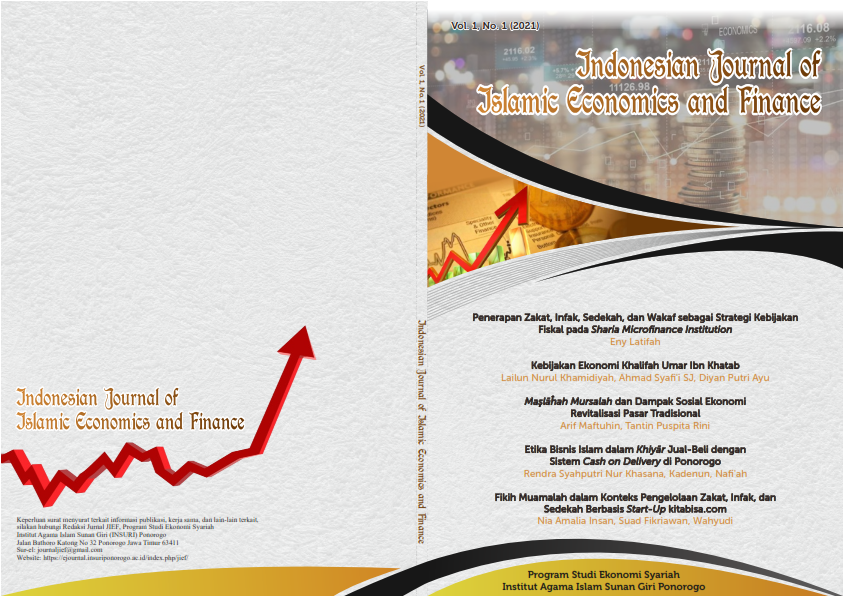Analysis of Employee Safety Behavior at PT BTUB to Achieve Zero Workplace Accidents
DOI:
https://doi.org/10.37680/ijief.v4i2.6712Keywords:
Employee Safety; Zero Accidents; Unsafe behavior; Behavior-Based SafetyAbstract
This study explores employee safety behavior at PT BTUB in support of achieving a sustainable zero workplace accident target. Despite successfully reaching this goal in 2022, challenges remain due to persistent unsafe behaviors among employees. Using the Safe Behavior Observation (PPS) tool, the research identifies key areas of unsafe practices, including improper positioning, misuse of tools and equipment, and risky activities during high-hazard tasks. These behaviors were systematically analyzed through a descriptive quantitative approach, integrating observational data and company safety reports. The findings highlight the positive impact of a safety culture fostered through leadership, employee participation, and targeted training programs. However, the study emphasizes the need for continuous improvements in safety practices by enhancing training quality, leveraging technology for real-time safety monitoring, and fostering stronger leadership engagement. By addressing these factors, PT BTUB can further strengthen its safety management system and provide valuable insights for other organizations in high-risk industries. This research underscores the importance of behavioral interventions in creating safer work environments and achieving sustainable safety outcomes.
References
Ammad, S., Alaloul, W. S., Saad, S., & Qureshi, A. H. (2021). Personal Protective Equipment (PPE) Usage in Construction Projects: A Systematic Review and Smart PLS Approach. Ain Shams Engineering Journal, 12(4), 3495–3507. https://doi.org/10.1016/j.asej.2021.04.001
Andrea, D. R., Handayani, R., Situngkir, D., & Millah, I. (2023). The Analysis of the Risk Factors of Unsafe Behavior Among Construction Workers in Tangerang. Journal of Vocational Health Studies, 6(3), 197–202. https://doi.org/10.20473/jvhs.v6.i3.2023.197-202
Asamani, L. (2020). Promote Safety Culture and Enhance Safety Performance through Safety Behaviour. European Journal of Business and Management Research, 5(4), 1–11. https://doi.org/10.24018/ejbmr.2020.5.4.405
Asikainen, I., Kannisto, H., Ansio, H., Koskela, I., & Puro, V. (2024). Safety at work in the process industry as a group Accomplishment: Shadowing safety-as-done. Safety Science, 172(July 2023), 106408. https://doi.org/10.1016/j.ssci.2023.106408
Ayuni, M. Q., Yusuf, M., & Dwiyanti, E. (2022). Performance Analysis of the Behavior-Based Safety Program in Reducing Occupational Accident Rates. Indonesian Journal of Occupational Safety and Health, 11(2), 275–284. https://doi.org/10.20473/ijosh.v11i2.2022.275-284
Baharuddin, A., Fachrin, S. A., & Putri, W. E. (2023). Behavior-Based Safety Implementation Using the DO IT Method at Pertamina in Makassar City. Diversity: Disease Preventive of Research Integrity, 4(1), 30–36. https://doi.org/10.24252/diversity.v4i1.40918
Barney, J. B., & Hesterly, W. S. (2014). Strategic management and CA - concepts and cases.
Bautista-Bernal, I., Quintana-García, C., & Marchante-Lara, M. (2024). Safety culture, safety performance, and financial performance. A longitudinal study. Safety Science, 172(December 2023), 106409. https://doi.org/10.1016/j.ssci.2023.106409
Baxter, M. (2022). Improving the effectiveness of public health infographics through design principle application. March.
Benson, C., Obasi, I. C., Akinwande, D. V., & Ile, C. (2024a). The impact of interventions on health, safety, and environment in the process industry. Heliyon, 10(1), e23604. https://doi.org/10.1016/j.heliyon.2023.e23604
Benson, C., Obasi, I. C., Akinwande, D. V., & Ile, C. (2024b). The impact of interventions on health, safety, and environment in the process industry. Heliyon, 10(1), e23604. https://doi.org/10.1016/j.heliyon.2023.e23604
Bęś, P., & Strzałkowski, P. (2024). Analysis of the Effectiveness of Safety Training Methods. Sustainability (Switzerland), 16(7). https://doi.org/10.3390/su16072732
Carra, S., Bottani, E., Vignali, G., Madonna, M., & Monica, L. (2024). Implementing Behavior-Based Safety in the Workplace: A Review of Conceptual and Empirical Literature. Sustainability (Switzerland), 16(23). https://doi.org/10.3390/su162310195
Chikwado, C., Irene Christopher, I., & Ikwunne, T. (2023). Impact and Significance of Occupational Health and Safety Policies on Workers Performance in Workplace: A Case Study Of NNPC, Enugu Depot. American Journal of Applied Sciences and Engineering (AJASE), 4(1), 24–37. https://doi.org/10.5281/zenodo.8001159
David, M., Firdaus, M., Novrizal, A., Ramadhan, R. A., Irfan, M., Ariyakohir, M., Abizarga, D. Q., & Rifai, V. (2024). 4008 | P a g e. 3(5), 4008–4020.
Donisi, L., Cesarelli, G., Pisani, N., Ponsiglione, A. M., Ricciardi, C., & Capodaglio, E. (2022). Wearable Sensors and Artificial Intelligence for Physical Ergonomics: A Systematic Review of Literature. Diagnostics, 12(12). https://doi.org/10.3390/diagnostics12123048
Dyreborg, J., Lipscomb, H. J., Nielsen, K., Törner, M., Rasmussen, K., Frydendall, K. B., Bay, H., Gensby, U., Bengtsen, E., Guldenmund, F., & Kines, P. (2022). Safety interventions for the prevention of accidents at work: A systematic review. Campbell Systematic Reviews, 18(2). https://doi.org/10.1002/cl2.1234
Eller, E., & Frey, D. (2019). Psychological Perspectives on Perceived Safety: Social Factors of Feeling Safe. May, 43–60. https://doi.org/10.1007/978-3-030-11456-5_4
Fuentes-Bargues, J. L., Sánchez-Lite, A., González-Gaya, C., & Artacho-Ramírez, M. A. (2023). Descriptive analysis and a proposal for a predictive model of fatal occupational accidents in Spain. Heliyon, 9(11). https://doi.org/10.1016/j.heliyon.2023.e22219
Ganiyev, K., Alizada, S., Asgarov, A., Gasimli, M., & Gasimzade, N. (2024). Safety Management in the Construction Industry: Bibliometric Analysis. Problems and Perspectives in Management, 22(3), 198–213. https://doi.org/10.21511/ppm.22(3).2024.16
Ghasemi, F., Kalatpour, O., Moghimbeigi, A., & Mohammadfam, I. (2017). Selecting strategies to reduce high-risk unsafe work behaviors using the safety behavior sampling technique and Bayesian network analysis. Journal of Research in Health Sciences, 17(1), 1–6.
Guzman, J., Recoco, G. A., Pandi, A. W., Padrones, J. M., & Ignacio, J. J. (2022). Evaluating workplace safety in the oil and gas industry during the COVID-19 pandemic using occupational health and safety Vulnerability Measure and partial least square Structural Equation Modelling. Cleaner Engineering and Technology, 6, 100378. https://doi.org/10.1016/j.clet.2021.100378
Hoe, V. C. W., Urquhart, D. M., Kelsall, H. L., Zamri, E. N., & Sim, M. R. (2018). Ergonomic interventions for preventing work-related musculoskeletal disorders of the upper limb and neck among office workers. Cochrane Database of Systematic Reviews, 2018(10). https://doi.org/10.1002/14651858.CD008570.pub3
Hofmann, D. A., & Stetzer, A. (1996). A cross-level investigation of factors influencing unsafe behaviors and accidents. Personnel Psychology, 49(2), 307–339. https://doi.org/10.1111/j.1744-6570.1996.tb01802.x
J., A. (2014). Determinants of employee engagement and their impact on employee performance. International Journal of Productivity and Performance Management, 63(3), 308–323. https://doi.org/10.1108/IJPPM-01-2013-0008
Jarvis, M., & Tint, P. (2009). Innovations at the workplace: An evidence-based model for safety management. Business: Theory and Practice, 10(2), 150–158. https://doi.org/10.3846/1648-0627.2009.10.150-158
Kim, M. H., Hong, J. H., Moon, B. J., Lee, W. J., & Jung, J. W. (2024). Development and validation of an unsafe behavior checklist for workers. PloS One, 19(11), e0314571. https://doi.org/10.1371/journal.pone.0314571
Martin, P. (2005). International Labour Organization. In Immigration and Asylum [3 volumes]: From 1900 to the Present [3 volumes] (Vol. 1). https://doi.org/10.4337/9781800378841.i.19
Men, L. R., Qin, Y. S., & Jin, J. (2022). Fostering Employee Trust via Effective Supervisory Communication during the COVID-19 Pandemic: Through the Lens of Motivating Language Theory. International Journal of Business Communication, 59(2), 193–218. https://doi.org/10.1177/23294884211020491
Nara, R. (2024). Regulatory Compliance and Monitoring Systems. March.
Nykänen, M., Puro, V., Tiikkaja, M., Kannisto, H., Lantto, E., Simpura, F., Uusitalo, J., Lukander, K., Räsänen, T., Heikkilä, T., & Teperi, A. M. (2020). Implementing and evaluating novel safety training methods for construction sector workers: Results of a randomized controlled trial. Journal of Safety Research, 75(xxxx), 205–221. https://doi.org/10.1016/j.jsr.2020.09.015
Perera, N., Perera, M. H., & Pathirathna, P. Y. (2024). Enhancing Ergonomics in University Environments: Identifying, Addressing, and Mitigating Hazards for Optimal Health and Productivity. April.
Policy, T. P. P. S., Manual, P., & Division, P. S. (n.d.). 0100 About This Topic 0140 Delegation of Responsibilities 0150 Questions, Concerns and Clarification 0160 Glossary.
Rahmawati, R., Supit, B. F., Lionardo, A., & Budiyanto, M. N. (n.d.). IAPA International Conference and Workshop 2023.
Syamtinningrum, M. D. P., Partiwi, S. G., & Dewi, D. S. (2018). Model of relationship between personal factors and Occupational Health and Safety (OHS) management toward unsafe actions: A case study. IOP Conference Series: Materials Science and Engineering, 337(1). https://doi.org/10.1088/1757-899X/337/1/012062
Tamminga, S. J., Emal, L. M., Boschman, J. S., Levasseur, A., Thota, A., Ruotsalainen, J. H., Schelvis, R. M. C., Nieuwenhuijsen, K., & van der Molen, H. F. (2023). Individual-level interventions for reducing occupational stress in healthcare workers. Cochrane Database of Systematic Reviews, 2023(5). https://doi.org/10.1002/14651858.CD002892.pub6
William, F., Carroll, Jr., Foster, & L., B. (2011). Handling and management of chemical hazards.
Zakaria, J., Che Hassan, C. R., Hamid, M. D., & Sukadarin, E. H. (2024). The effectiveness of behavior-based safety observation program (BSOP) in the chemical manufacturing industry. Process Safety Progress, 43(1), 52–62. https://doi.org/10.1002/prs.12533
Zara, J., Nordin, S. M., & Isha, A. S. N. (2023). Influence of communication determinants on safety commitment in a high-risk workplace: A systematic literature review of four communication dimensions. Frontiers in Public Health, 11(August). https://doi.org/10.3389/fpubh.2023.1225995
Zhang, S., Roller, S., Goyal, N., Artetxe, M., Chen, M., Chen, S., Dewan, C., Diab, M., Li, X., Lin, X. V., Mihaylov, T., Ott, M., Shleifer, S., Shuster, K., Simig, D., Koura, P. S., Sridhar, A., Wang, T., & Zettlemoyer, L. (2022). OPT: Open Pre-trained Transformer Language Models.
Downloads
Published
How to Cite
Issue
Section
License
Copyright:
An author who publishes in Indonesian Journal of Islamic Ekonomics and Finance agrees to the following terms:
- Author retains the copyright and grants the journal the right of first publication of the work simultaneously licensed under a Creative Commons Attribution-NonCommercial 4.0 International License that allows others to share the work with an acknowledgment of the work's authorship and initial publication in this journal.
- Author is able to enter into separate, additional contractual arrangements for the non-exclusive distribution of the journal's published version of the work (e.g., post it to an institutional repository or publish it in a book) with the acknowledgment of its initial publication in this journal.
- Author is permitted and encouraged to post his/her work online (e.g., in institutional repositories or on their website) prior to and during the submission process, as it can lead to productive exchanges, as well as earlier and greater citation of the published work (See The Effect of Open Access).
License:
-
Attribution — You must give appropriate credit, provide a link to the license, and indicate if changes were made. You may do so in any reasonable manner, but not in any way that suggests the licensor endorses you or your use.
-
NonCommercial — You may not use the material for commercial purposes.
-
No additional restrictions — You may not apply legal terms or technological measures that legally restrict others from doing anything the license permits.
You are free to:
- Share — copy and redistribute the material in any medium or format
- Adapt — remix, transform, and build upon the material

This work is licensed under a Creative Commons Attribution-NonCommercial 4.0 International License.



.png)







